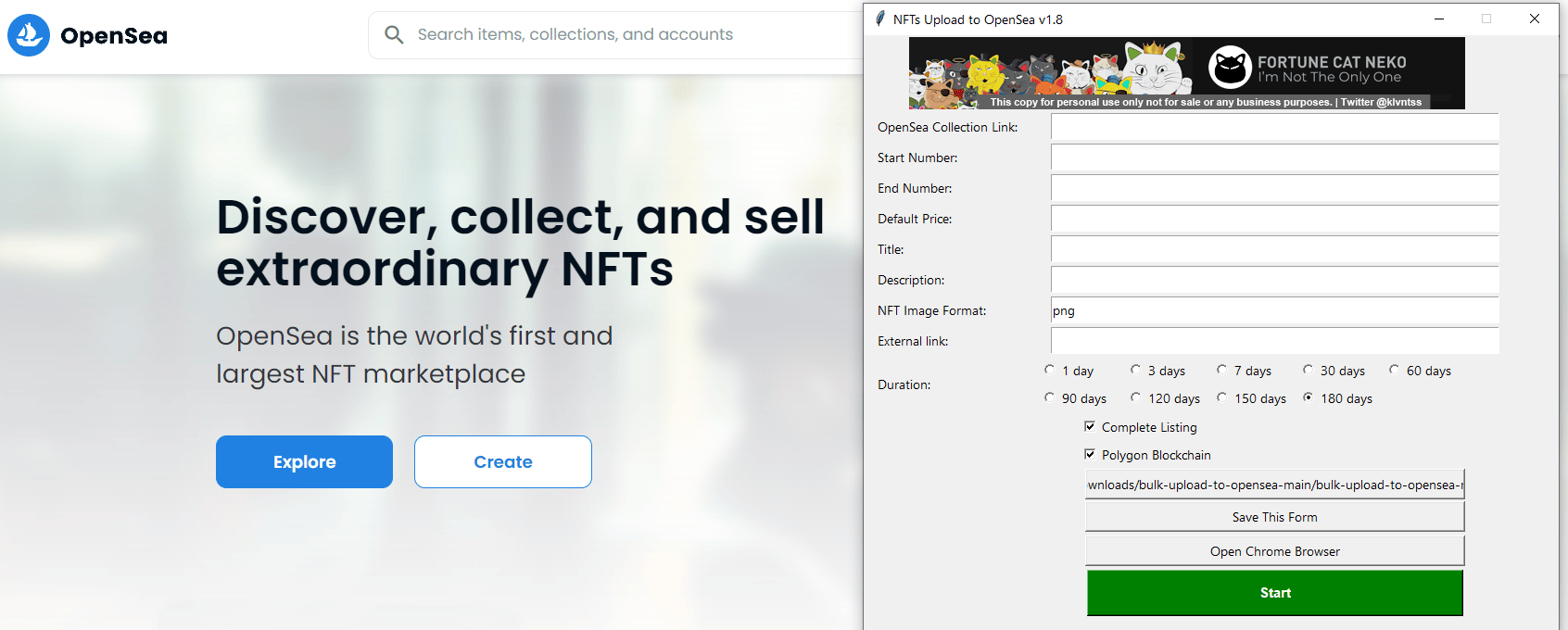IPFS vs OpenSea Upload: My fascination with NFTs has been marred by limited information on specific topics that puzzled me. There are lots of things that I needed to learn in order to create my NFT collection, but it was difficult to find answers. I couldn’t for the life of me figure out why anyone would use services like Pinata to upload their NFTs and metadata to IPFS instead of simply using OpenSea’s image upload, and no amount of Googling could save me. So, once I figured it out, I thought I should share my find. So, here we go.
There are 2 main reasons why someone would go through the process of uploading to a separate IPFS site:
IPFS vs OpenSea Upload
1. NFT Mystery Drop
If you are creating a mystery drop on your website, then you’ll need to use a separate IPFS site. A mystery drop is when the buyer cannot see what NFT they’ll be minting in advance. They will simply see a placeholder image, and once they’ve minted their NFT, it will be revealed to them. You would create your individual NFT images, your metadata for those images, and a placeholder image – and upload them all to an IPFS server. You’ll then create a smart contract and run it from your website.
2. Bulk Uploads
There are a few ways that you can bulk upload your NFTs to OpenSea. Some people use Google Sheets with macros, while others use Python scripts. The Google Sheets method and some Python scripts can upload directly to OpenSea – meaning that you won’t have to bother with IPFS at all. However, there are some Python scripts that require to use IPFS as a precursor to being able to bulk upload successfully. Those that are used to this method, would use it and recommend it because it’s what works for them However, you can use whichever method you choose to.
3. File Size Limit
The file size limit for NFT uploads on OpenSea is 100MB. This should be enough for any image NFT, but if you’re creating a video NFT – you may need additional space. IPFS servers give you individual upload sizes of between 1GB and 25GB, so if you need that extra space for your NFT, you’ll need to upload separately to Pinata or another IPFS site.
Those are the 3 main reasons why you see people using IPFS upload sites instead of simply uploading to OpenSea. I hope that this has cleared up any confusion that you’ve had with this process.
When creating my NFT collection, I first used a Photoshop script to create my NFTs, however, the script did not generate any metadata (JSON files). This would mean having to create a 1000 individual JSON files – which just wasn’t an option.
I then recreated everything using a Python script (one that included metadata), and used a second Python script for uploading directly to OpenSea. The information from that JSON file was used by the script to populate the fields of OpenSea – meaning that I didn’t need to upload my images or metadata to Pinata or any other IPFS site.
You can find the complete method I used to create and bulk upload NFTs to OpenSea.
The more you know…



